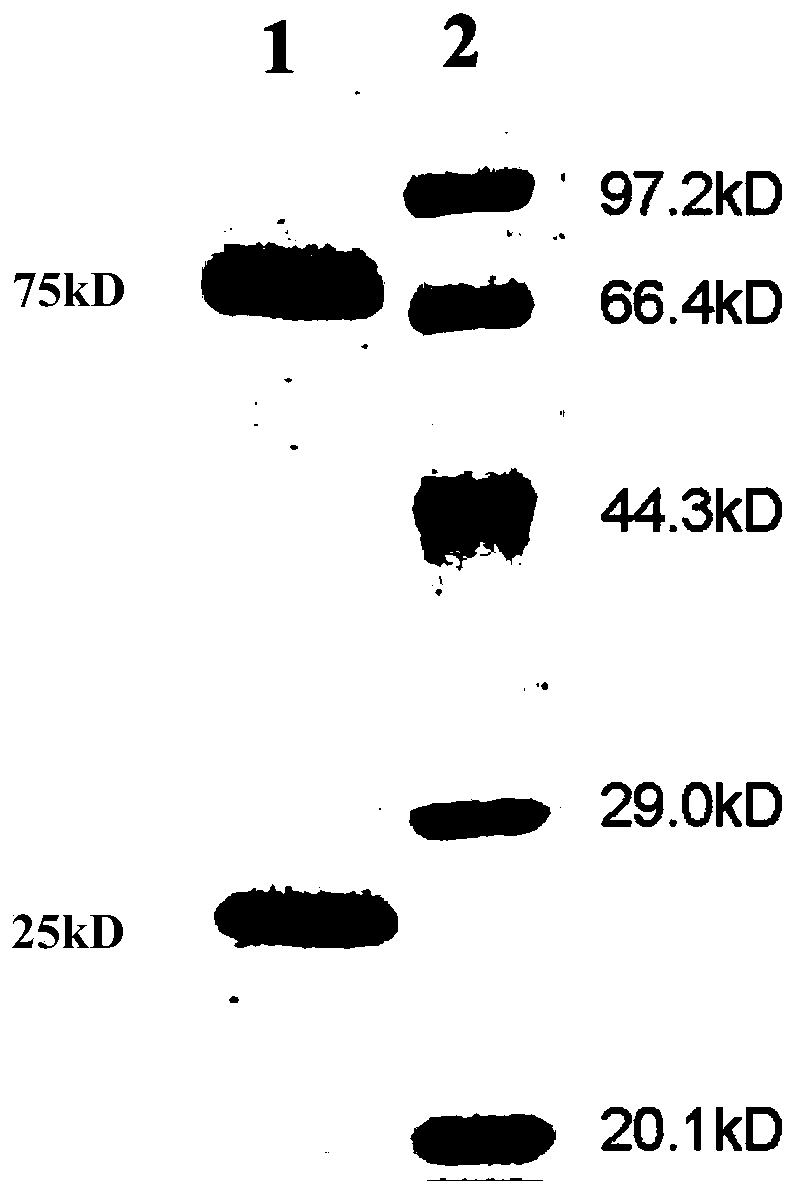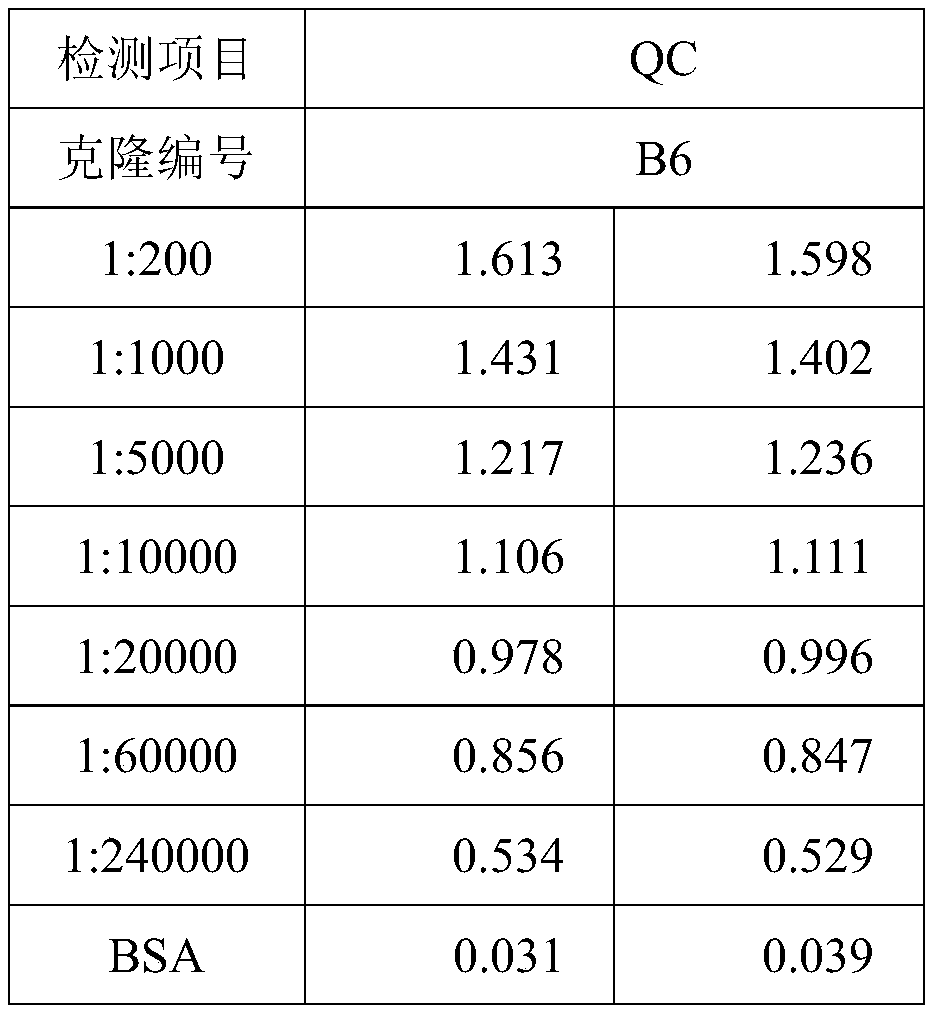Monoclonal antibody resisting Tilapia immunoglobulin IgM, cell strain of monoclonal antibody and application of monoclonal antibody
A monoclonal antibody and immunoglobulin technology, applied in the biological field, can solve the problems of complicated isolation operation process of tilapia lake virus, difficulty in wide application, high conditions and technical requirements, etc.
- Summary
- Abstract
- Description
- Claims
- Application Information
AI Technical Summary
Problems solved by technology
Method used
Image
Examples
Embodiment 1
[0039] Preparation and purification of embodiment 1 anti-tilapia immunoglobulin IgM monoclonal antibody
[0040] Experimental Materials:
[0041] The experimental tilapia was from the Pearl River Fisheries Research Institute of the Chinese Academy of Fishery Sciences, with a body length of 15-20 cm; other chemical reagents were analytically pure, provided by Guangzhou Weijia Technology Co., Ltd.
[0042] 1. Purification of Tilapia IgM
[0043] 1.1 Take blood from tilapia by docking the tail, put it in a glass tube, solidify it at room temperature, put it at 37°C for 2 hours, and then put it at 4°C overnight, after the serum is fully analyzed, centrifuge at 3000g / min for 10min, take it clear.
[0044] 1.2 Purification: centrifuge the fish serum at 12000rpm for 20min, and take the supernatant; measure the volume of the supernatant; slowly add saturated ammonium sulfate solution to the supernatant while stirring, until the final saturation is 33%. Stir the solution on a magnet...
Embodiment 2
[0079] Embodiment 2 Tilapia lake virus indirect ELISA detection kit
[0080] The indirect ELISA kit for detecting Tilapia Lake virus consists of: the monoclonal antibody prepared in Example 1; coating solution; horseradish peroxidase-labeled goat anti-mouse antibody (purchased from Wuhan Boster Biotechnology Company); Enzyme substrate reaction solution; positive control; negative control (standard serum); washing solution; TMB chromogenic solution and reaction termination solution.
[0081] The positive control was purified tilapia lake virus, and the negative control was uninfected normal tilapia serum.
Embodiment 3
[0082] Example 3 Establishment of Tilapia Lake Virus Indirect ELISA Detection Method
[0083] 1. Determination of antigen working concentration
[0084] Dilute the purified tilapia lake virus with coating solution (pH8.6) to a concentration gradient of 50 μg / mL, 30 μg / mL, and 10 μg / mL, coat a 96-well microtiter plate, add 100 uL to each well, and store in a humid chamber at 4°C Pack overnight. Add 300 μL of 10% skim milk to each well to block, incubate in a 37° C. incubator for 1 h, and wash with PBST 3 times, each time for 3-5 min. Anti-TiLV (Tilapia Lake Virus) positive serum and tilapia negative serum were diluted 1:300 times, and 100uL was added to each well for ELISA square array test, incubated in a 37°C incubator for 1h, washed 3 times with PBST, and 3-5 minutes each time. The above prepared mouse anti-tilapia IgM antibody 1:2000, 100uL per well, incubated in a 37°C incubator for 1h, washed 3 times with PBST, 3-5min each time. Add 50 μL chromogenic substrate (TMB), ...
PUM
 Login to View More
Login to View More Abstract
Description
Claims
Application Information
 Login to View More
Login to View More - R&D
- Intellectual Property
- Life Sciences
- Materials
- Tech Scout
- Unparalleled Data Quality
- Higher Quality Content
- 60% Fewer Hallucinations
Browse by: Latest US Patents, China's latest patents, Technical Efficacy Thesaurus, Application Domain, Technology Topic, Popular Technical Reports.
© 2025 PatSnap. All rights reserved.Legal|Privacy policy|Modern Slavery Act Transparency Statement|Sitemap|About US| Contact US: help@patsnap.com



